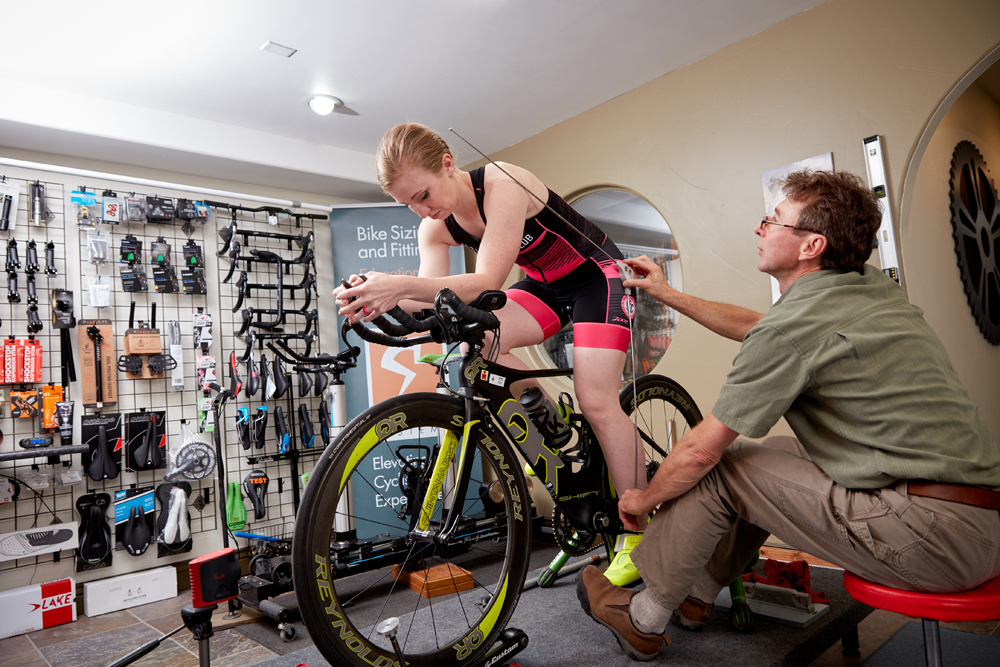By John Higgins — Many of you will be familiar with the following formula for bike ownership: number of bikes to own = N+1, where N = the number of bikes you currently own. Let’s say your current N is great than 1, so you own 2 or more bikes. This may be some combination of road, mountain, gravel, touring or TT/Tri. You may be wondering if your fit position is similar from bike to bike. To what extent are they set up the same way, and where are the differences?

From a bike fitting perspective, your body rotates in space around the center of the bottom bracket, and connects to the bike at an “appropriate” position in space at the pedals, saddle, and bars or aero pads and extensions. What an appropriate position is depends on the style of riding being performed which ties in with the style of bike you are riding.
The one thing that stays constant from bike to bike is your seat height from the bottom bracket to top of the saddle. There will be some variation due to crank arm length and pedal system, but once you have a functionally good saddle height, that can transfer from bike to bike.
What changes is your body rotation in relation to the bottom bracket. This is controlled by your saddle setback, which is how far the nose of the saddle is to the rear of a vertical line through the bottom bracket. This assumes a “standard saddle” and is really a proxy for where your hips are in space. Setback can be described as ranging from slack to steep, in common with the seat tube angle. At the slack end of the range we have downhill mountain bikes, and then we transition through mountain bike styles (all mountain, trail, XC) to gravel and cyclocross, then road racing and finally to triathlon at the steepest end of the setback continuum. Time Trial should be at the steepest end of the range, but is restrained by UCI rules on bike set up.
So your mountain bike will have more saddle setback than your road bike, and your road bike will have more saddle setback than your TT or tri bike. If you have two road bikes, a bike used for crits will ideally have a smaller setback than a road bike used for stage races or gran fondos.
Saddle setback has a flow on effect to the handlebar reach and drop. A slacker set back will result in bars higher and closer to you than a steeper setback. Think of your position on a road bike compared to a mountain bike. On the mountain bike the handlebars will be higher and closer to you than on your road bike, resulting in a more upright torso angle and open hip angle. Go the other way to a tri position and the bars are further forward and lower than your road bike.
So if your N is greater than 1, and they are different types of bikes, or the same bikes used for different types of riding, the only constant is saddle height. Saddle setback and bars rotate either clockwise or counterclockwise around the BB according to the type of bike and riding style, which makes duplicating your bike fit position from one bike to another not as simple as you hoped it would be, but now you know why.
John Higgins wants to elevate your cycling experience. He operates BikeFitr – an independent bike fitting studio, and Fit Kit Systems – supplying equipment and education to bike retailers and fitters. Contact: [email protected]

